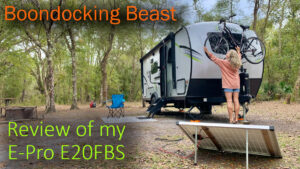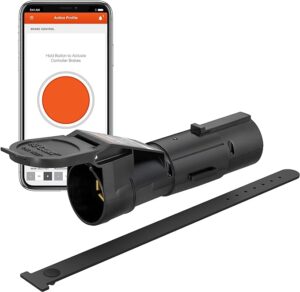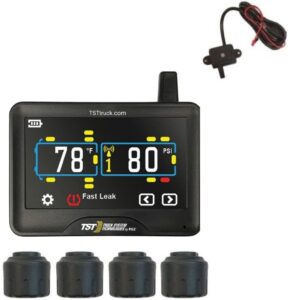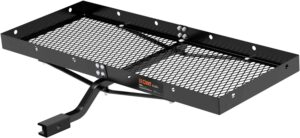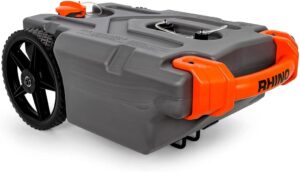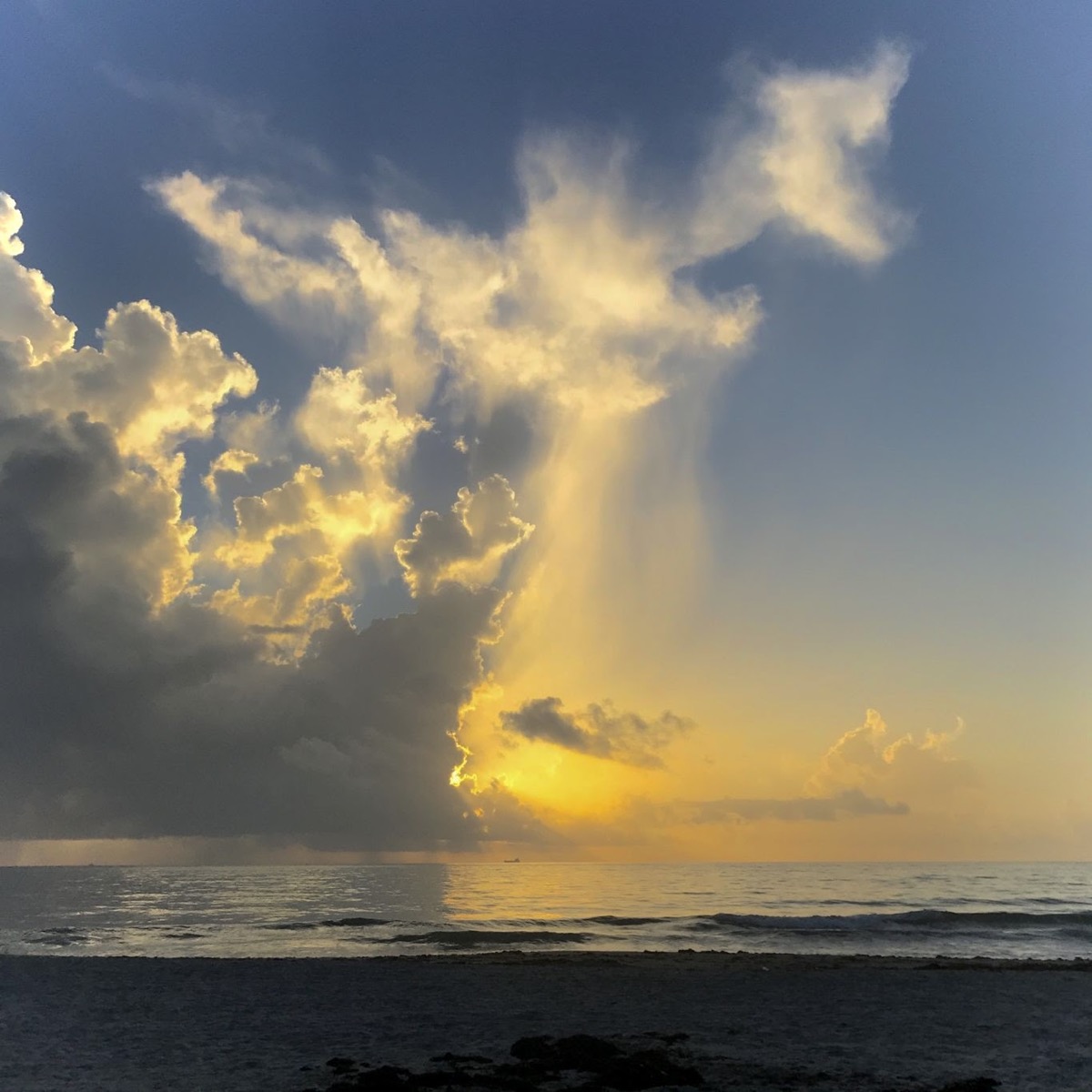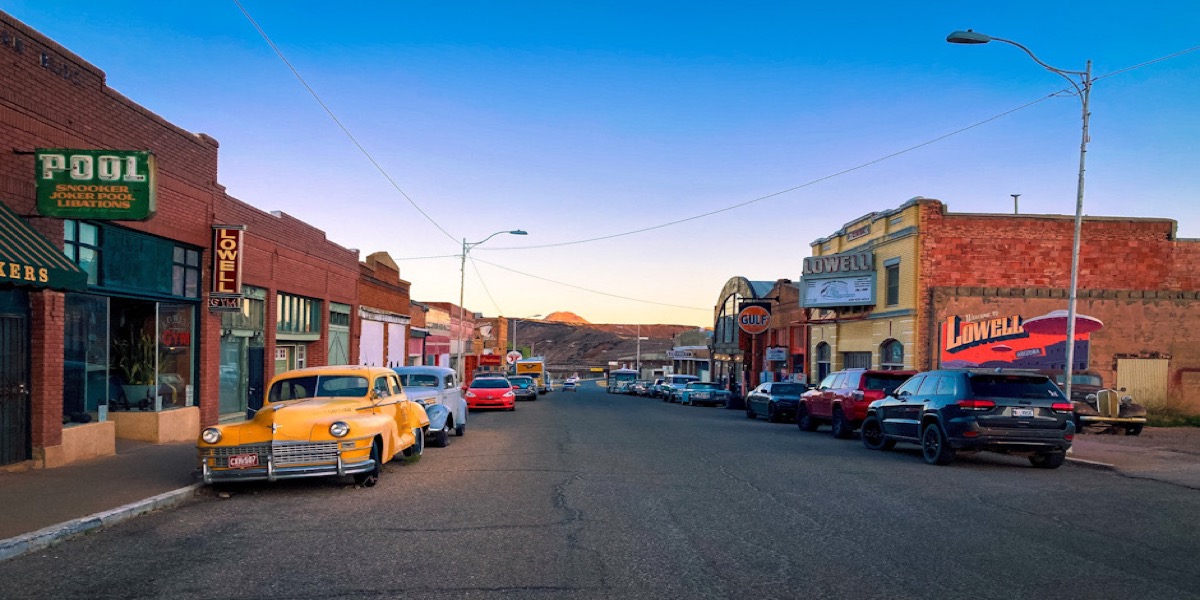Introduction
We want to tell you more about our current home – the Flagstaff E-Pro E20FBS with Power Package. We call her our Boondocking Beast because we can camp for weeks in the wild without power connections!
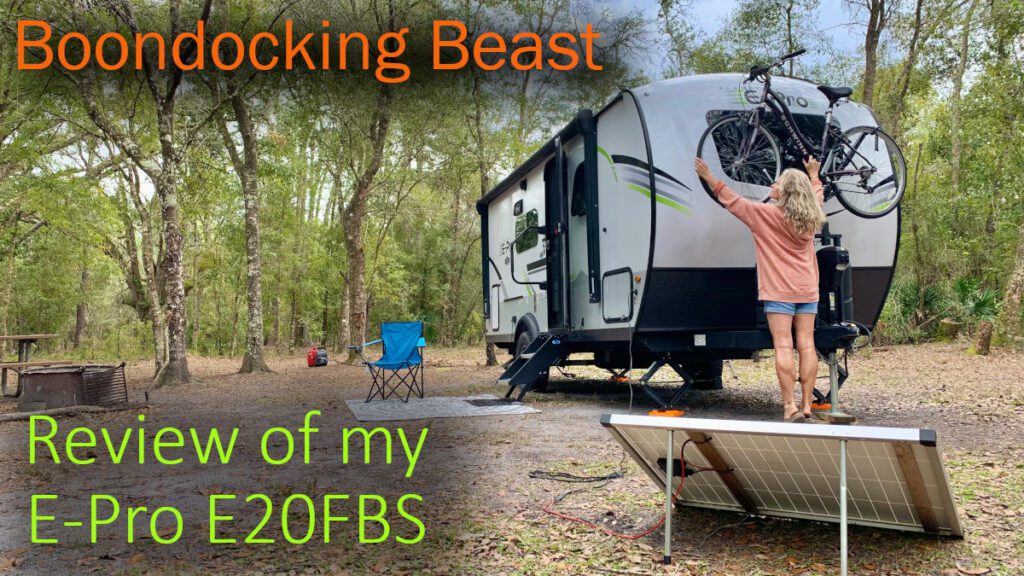
In this article, we explain why we bought this particular model, which options we selected, and some likes and dislikes. We also share valuable information about the capabilities of the Power Package (solar charging system and Lithium battery).
We plan to write several more articles about the trailer setup, organization, modifications/upgrades, and boondocking in general. Please check in often!
Disclosure: Some links below are Amazon affiliate links. This means that, at zero cost to you, we earn an affiliate commission if you click through the link and finalize a purchase.
Forest River’s Flagstaff E-Pro versus Rockwood Geo Pro
It is the same trailer with different graphics and a few different configuration options. Manufacturers use this technique to increase sales by allowing neighboring dealers to market and sell “different” brands!
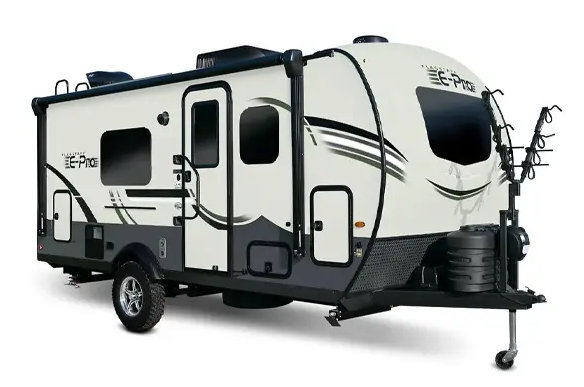
Therefore, if you are looking to buy a Rockwood Geo Pro, the information presented here also applies to the Geo Pro.
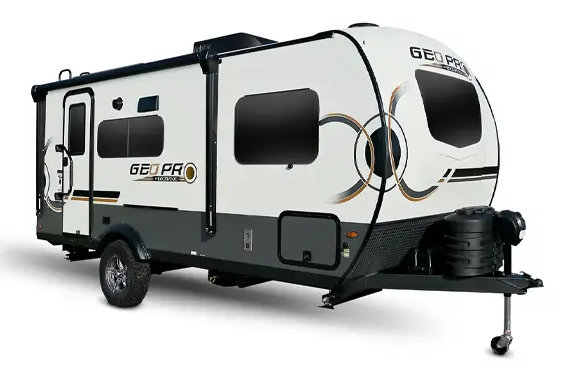
Travel Trailer, Class A, Class B, Class C or something else?
When we began the research for a comfortable home on wheels, we focused on travel trailers for several reasons but mainly because we wanted the home and vehicle to be separate.
- Nowadays there are very long wait times for RV repairs and we did not want to be homeless while the RV was in line for transmission or engine repairs.
- Melinda already owned an SUV (eventually she traded for a more powerful model) and it was cost-effective to buy a newer trailer with all the power options we wanted.
Who knows what the future has in store and we may end up with another type of RV but at this time we are very happy with the E-Pro decision.
Our Minimum Requirements for Boondocking and Life on the Road in a Travel Trailer
After more than 2 years on the road camping out of vehicles, and sharing experiences with fellow nomads, we came up with a list of basic specifications for the trailer.
- Under 25 feet long (fit in most campsites and easy to maneuver while on the road)
- Under 4500lbs when loaded (towable by a large SUV)
- Single axle (lower weight and cheaper to maintain)
- High clearance
- 2 x 20lb propane tanks (cooking, heat and hot water)
- Roof ladder (easier access to the roof to clean solar panels)
- Heated holding tanks (for occasional winter camping)
- 2″ Hitch receiver (to add a hitch rack for extra storage)
- Single slide (lower weight with extra room for full-time living)
- Tire-pressure monitoring system (essential for long-distance driving)
- Black tank flush (easier tank cleaning)
- 72″ sofa coach (we do not like dinettes and the sofa converts easily into a bed)
- A full walk around bed (for easier bed-making)
- Oversized shower (Melinda’s long hair needs extra shower space)
- Shower miser system (it really saves water when boondocking)
- Tongue mount bike rack (for other storage instead of a bike rack)
- Solar and battery system for extended boondocking
- Air conditioner that does not require a generator while boondocking
We also visualized the “perfect” floor plan with functionality and comfort in a small footprint! The E-Pro E20FBS floorplan comes very close.
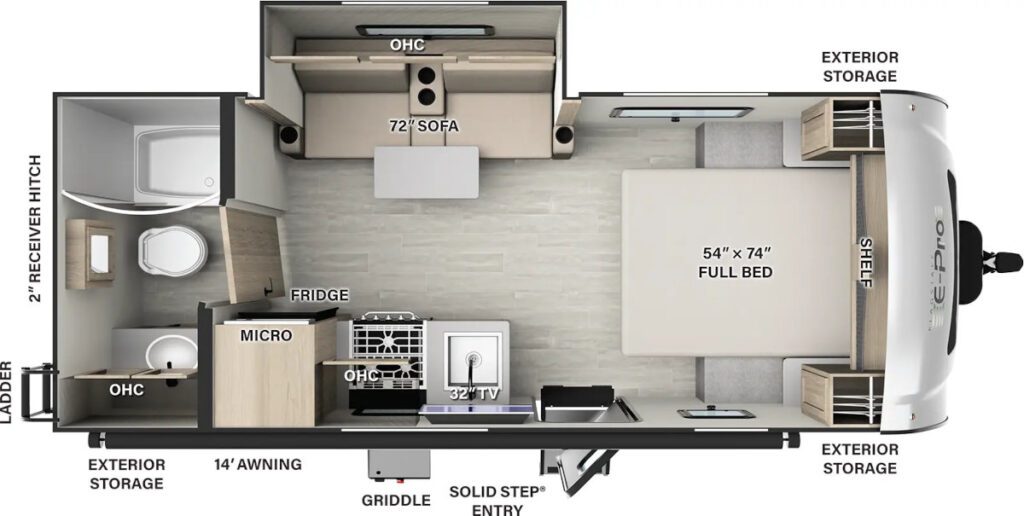
Flagstaff E-Pro E20FBS with Power Package
After about 2 months of trailer shopping in the heat of southern Arizona, the E-Pro E20FBS Power Package stood out as a favorite!
Not only did it look sporty and outdoorsy, at only 21′ 2″ and with a dry weight of 3545lbs, it was the perfect trailer for us!
The specifications of the standard E20FBS are available on the Forest River website.
While the standard model (with Package A) offered most of the features we want for boondocking, it required major upgrades for true off-the-grid camping. The basic solar and battery system may work for some but for extended stays in the wild, we needed a much more powerful system.
Fortunately, the E-Pro offered a Power Package option and that sealed the deal! We could actually run the A/C without a generator!
Here are the specs for the E-Pro Power Package:
- 400AH SINGLE MASTERVOLT MLI LITHIUM-ION BATTERY W/ SAFETY DISCONNECT
- 3KW (3000 WATTS)/160A INVERTER/CHARGER MASTERVOLT COMBIMASTER
- 3 -200W SOLAR PANELS (600 WATTS) TO MAINTAIN/CHARGE BATTERY BANK
- 11,000BTU COLEMAN MACH SOFT START A/C
- 2 SMART REMOTES – OFFERING MONITORING AND CONTROL FOR THE SYSTEM
- SIDE SOLAR PLUG IN STANDARD FOR PORTABLE SOLAR OPTION
We love the Power Package and explain it in more detail below.
Our Review of the 2023 E-Pro E20FBS with Power Package
After nearly a year, we are happy to say “we love the E20FBS!”
Here is a summary of our observations:
Driving the E20FBS
The trailer feels stable on the road up to about 55 mph (without a weight distribution hitch and sway control). At higher speeds with semi-trucks flying by, the hitch upgrades are recommended. When loaded, the E20FBS requires at least 5500lbs towing capacity and our SUV exceeds this (8000lbs) which explains the comfortable ride.
We pack carefully – avoiding heavy loads near the front hitch or at the back. The trailer performs best when most of the weight is centered near the axle.
Much to our surprise, the CURT 51180 Echo Mobile Electric Trailer Brake Controller with Bluetooth-Enabled Smartphone Connection works very well without the expense of installing a mounted brake controller in the SUV!
The Tire Pressure Monitoring System is working as expected and makes driving less stressful because we do not have to watch the trailer tires in the side mirrors.
Being under 22 feet, the trailer is easy to drive in tight spaces such as gas stations. Initially, we looked for truck stops and large gas stations, but nowadays we pull in anywhere!
Our model is wired for a backup camera but so far we had no need to install one. The trailer is very easy to back into the tightest spots in campgrounds.
We like the awning led light and the hitch light for hooking up at night.
E20FBS Exterior
There’s been no leaks or defects of any kind and the trailer is still looking great! We use Meguiar’s Hybrid Ceramic Wax on occasion to protect the gel coat.
We installed a hitch carrier with large boxes to store extra sewer components, water hoses, levelers and other essential but dirty necessities. This keeps the storage compartments dry and clean.
At around 27 gallons each, the three holding tanks are large enough for extended boondocking but we invested in a 15 gallon Rhino Portable Tote Tank for emergency use! It is mounted on the ladder while traveling.
The bike rack on the hitch took time to figure out but now we can load/unload a bike in minutes. It can take two bikes but we keep the 2nd bike in the RV during travel because two bikes do affect the turning radius (because the other bike has wide handle bars).
The awning and slide-out have both been flawless. We learned to operate the switches carefully so the units have a few seconds to settle after operation. This prevents alignment issues.
We used the tank heaters a couple of nights in Northern Florida during winter and have not seen the peeling problem described by others.
On the roof, the 3x200w solar panels and wiring are performing as desired. They get dirty, however, which is why we wanted a roof ladder to get up there and wipe them every couple of days.
E20FBS Interior
Generally speaking, everything inside works as expected with one exception – the tank indicators failed after a month and still cannot be trusted. We manage the holding tanks without looking at the indicator lights.
The interior woodwork quality of the trailer is very disappointing. Shoddy workmanship and bad design has lead us to fix several cabinets. Some of the “wood” is really just cheap fiberboard that absorbs moisture and swells when wet.
The cheap mattress was replaced with thick foam after only a couple weeks!
The sofa is heavy and very poorly made. The cushions are sagging and the interior foam is losing shape!
The lack of storage coupled with wasteful design is causing owners to pull apart interior sections of the trailer in order to create space. We are doing the same and had to remove an armrest to allow access to the bathroom when the slide is in.
The water faucets started to leak after a few moths and we replaced them with products from a hardware store.
The 12V TV had a loose antenna connection and we wanted Roku so it was replaced with a slightly larger TV from Walmart. It works great!
The trailer has no “mood lighting” or reading lights! The interior lights are bright and impersonal. What a shame to not have floor or under cabinet lights for a more intimate interior at night.
The shower miser system works very well to save water. We switch it on while boondocking to let it cycle the hot water back into the fresh water tank until it reaches they desired temperature. The propane water heater is faster than the electric heater and it uses less battery power (propane is cost-effective).
We love the central heat/cool display unit. We can automate the propane heat setting and the A/C temperature setting with just a few buttons!
The E-Pro Power Package
Look for a separate article about the E-Pro Power Package and how we manage power while boondocking.
We can say this – choosing the E-Pro Power Package was expensive but worth every penny! While there are exceptions, it allows us to boondock or camp without electric hookups for any extended period of time.
With the Power Package we do not need a generator or electric hookup to run the air conditioner, microwave, coffee maker, toaster, a small heater, electric blankets, computers, and outlets.
The Three E20FBS Power Package Components
1 – The Supply Component
The battery powers 12 volt devices such as the exterior lights, the slide, the awning, the hitch jack, the interior lights, the fridge, the water pump, The Max fan, the heat controller, the TV, the USB ports, and panel lights.
The battery also powers the inverter which converts 12 volt into 120 volt in order to power the AC outlets (including the microwave and A/C).
The battery switch is hard to reach inside the outside front storage compartment!
2 – The Pass-thru Component
Simply speaking, when connected to shore power or generator, all the 120V outlets and devices are powered directly from the outside. The inverter is not used. This is why it is important to be careful when plugging into an outlet at a friend’s house for example – you can trip their circuits when running the A/C for example. But the Power Package has a switch to set the proper input power!
3 – The Charging Components
The battery charger activates when connected to shore power or generator. The solar controller charges the battery whenever there is sun!
The Best Features of the Power Package
It is automatic and silent! When the battery is charged, the RV feels like a house with normal power to run everything we need including the A/C.
The monitors show power usage and even predicts (in days, hours and minutes) how long the battery will last under the current load.
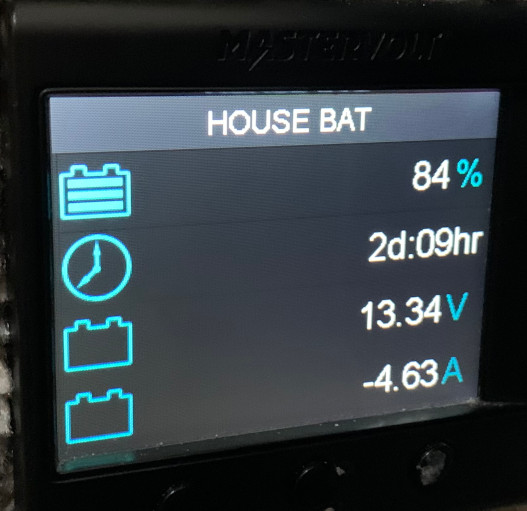
The system will shut down to protect itself if needed – such as running A/C, microwave and toaster at the same time!
The Challenging Features of the Power Package
It performs so well, we sometimes forget that we are not connected to a power source! We may end up with a depleted battery after falling asleep with the A/C running. And we cannot run everything at the same time due to the 3000 watt inverter limitations!
When boondocking, the Power Package is limited by the solar input. In 2023 most of our camping was along the East Coast in shady camp sites. The solar panels did not perform well and we had to adjust our expectations.
For us, the solution was three-fold:
- Generator – We used a quiet Honda EU200i generator to help the Power Package on cloudy days or when camped in the shade.
- More Solar – We bought a 100 watt portable solar panel that connects to an outside auxiliary port. The idea is to place the portable in the sun when the roof panels are in the shade.
- Positioning – We became very aware of the path of the sun and how to park to optimize the solar charge. We use an App on the phone for this purpose – Sun Seeker.
Lastly, the Power Package does not come with clear instructions. It took a long time to figure things out and the RV dealers were not helpful because it was new to them as well.
It has many additional features that we will explain in future articles, such as a setting to limit its draw! This ensures the RV does not trip the power at a friend’s house, for example!
Some insights about our usage of the Power Package
- During the night, the battery loses about 10% of its power to run the fridge, the AC sockets, the water pump, USB ports, the interior lights, and device lights (such as the microwave clock). The interior lights and water pump are mostly off while we sleep. We can save a bit of power by switching off the inverter – meaning the AC sockets are not powered.
- On very sunny days, the 700 watt solar panels can bring a low battery to 100% in 5 hours or so – if parked correctly!
- When possible, we park the trailer with the driver side to the sun (two panels on the roof on this side). We also keep the portable panel in an optimum position during the day.
- The A/C is interesting because it has a soft start to conserve power! While boondocking we use the COOL LOW setting at a desired temperature instead of COOL AUTO. This allows the fan to continue blowing over the cold coils (and keeping things cool) instead of switching off and on repeatedly.
- On really hot days, we can run the A/C for 4 hours or so at a cool temperature before the battery runs low. This really makes a difference when boondocking in summer.
- Despite the benefits of the Power Package, we will not be able to boondock indefinitely without we generator. The weather is too unpredictable and after few days of rain and cloudiness the battery will run low. The generator charges at a rate of about 10% per hour – meaning the battery will go from 70% to 80% in an hour.
- We try to keep the battery above 60% capacity so we can easily bring it back to 100% with a few hours of generator use on cloudy days.
- The Power Package protects itself from overcharging, undercharging and over-usage. For example, it shuts down when we run the A/C and microwave at the same time while using the inverter.
- There is an oddity with the Power Package that we are still trying to understand. Once it shuts down, you can only restart the system with shore power (or generator). It takes about 2 minutes to reset.
Last Words
The E-Pro and Geo Pro RV communities are very active on Facebook groups and we have learned a lot from other owners.
There is one common theme – everyone loves their RV and shares our happiness with this trailer.
Our system was factory-installed and it’s been over a year without issues! When the time comes for upgrades, we plan to contact ABC Marketing in Elkhart, IN. They have rave reviews and are very active on social media to answer questions and offer advice.
We monitor the Facebook Group – Rockwood Flagstaff Power Package Owners and Fans – and we highly recommend joining if you plan to purchase a Power Package.
We are excited to document our future experiences while traveling in the E-Pro throughout America’s backcountry and scenic landscapes. Go well and RV on!

